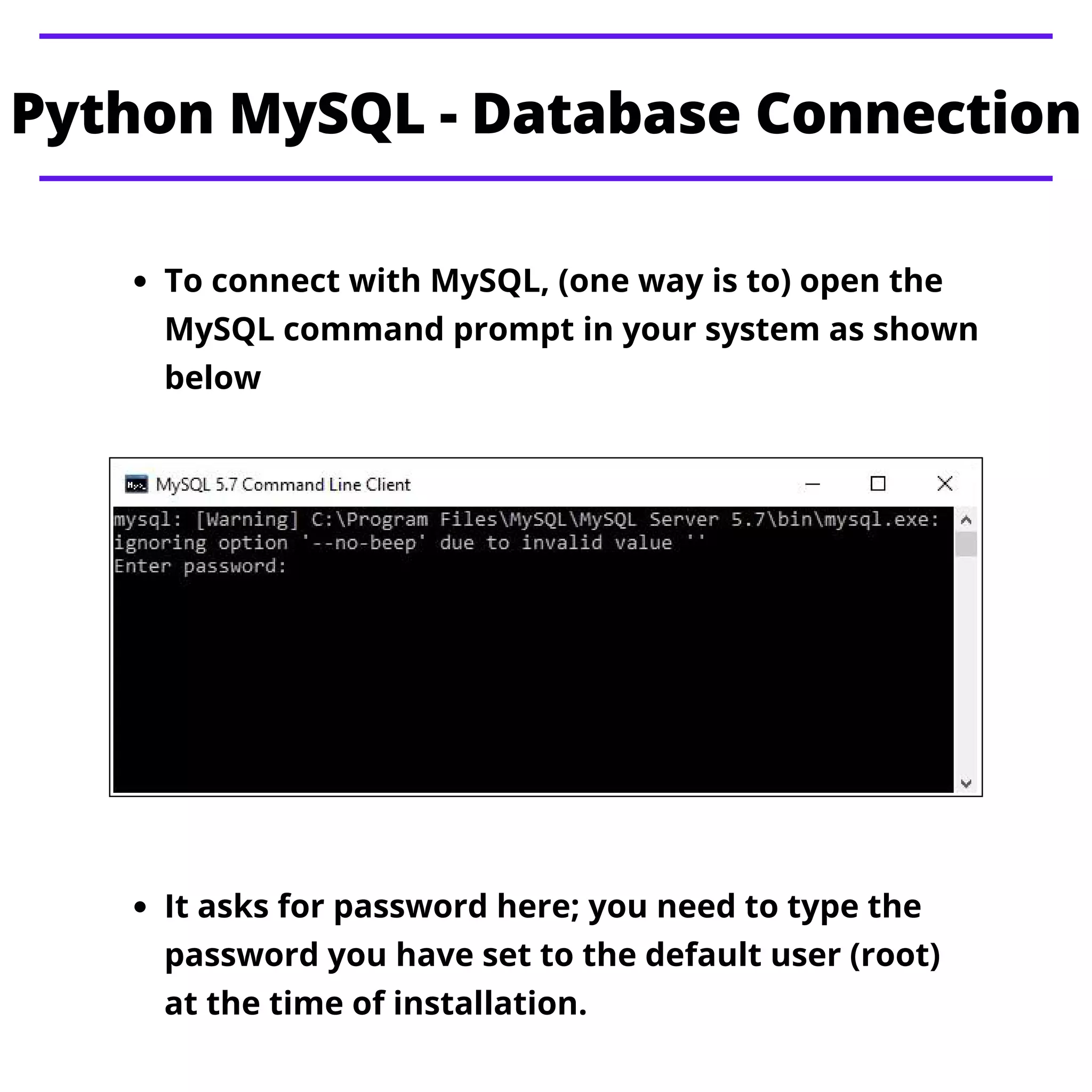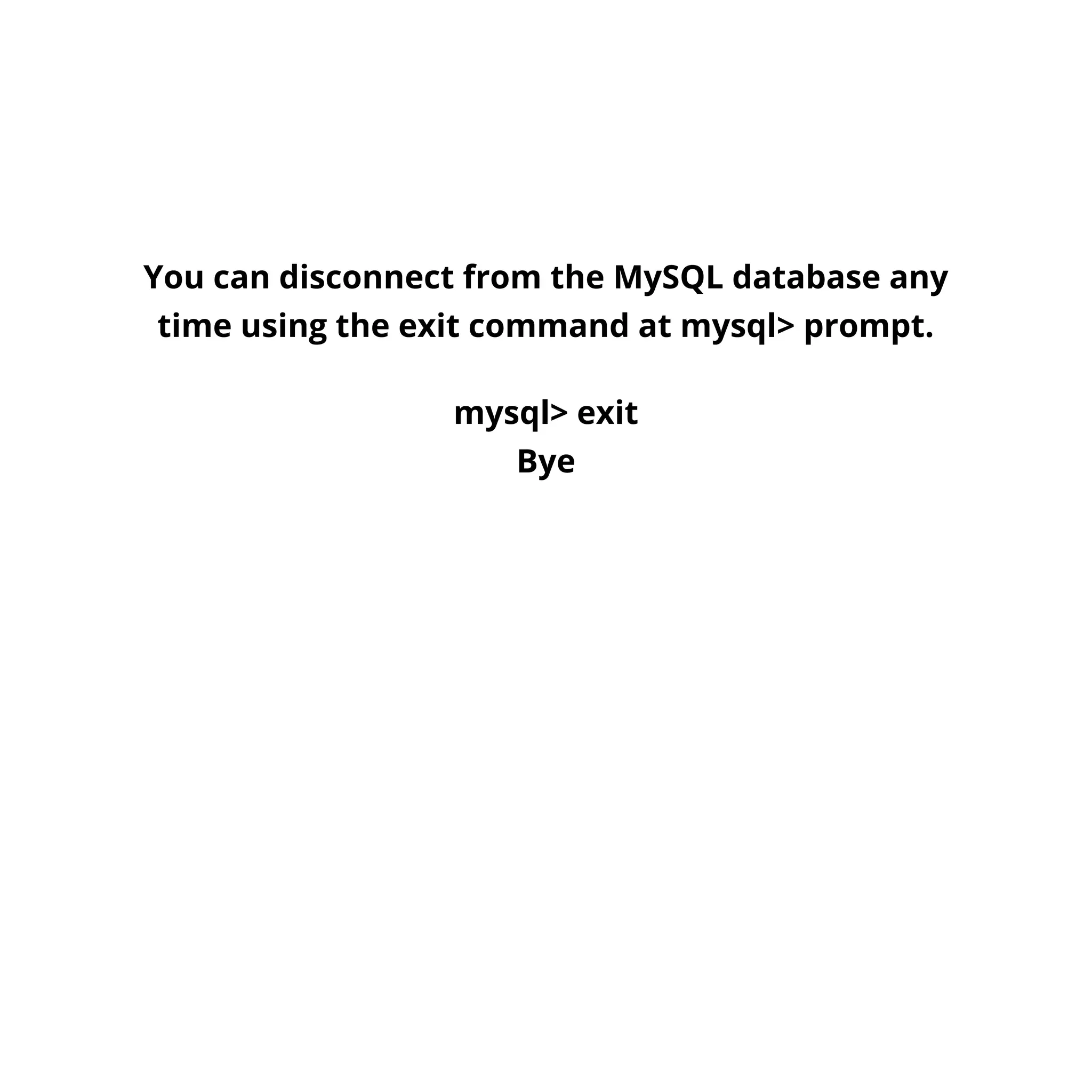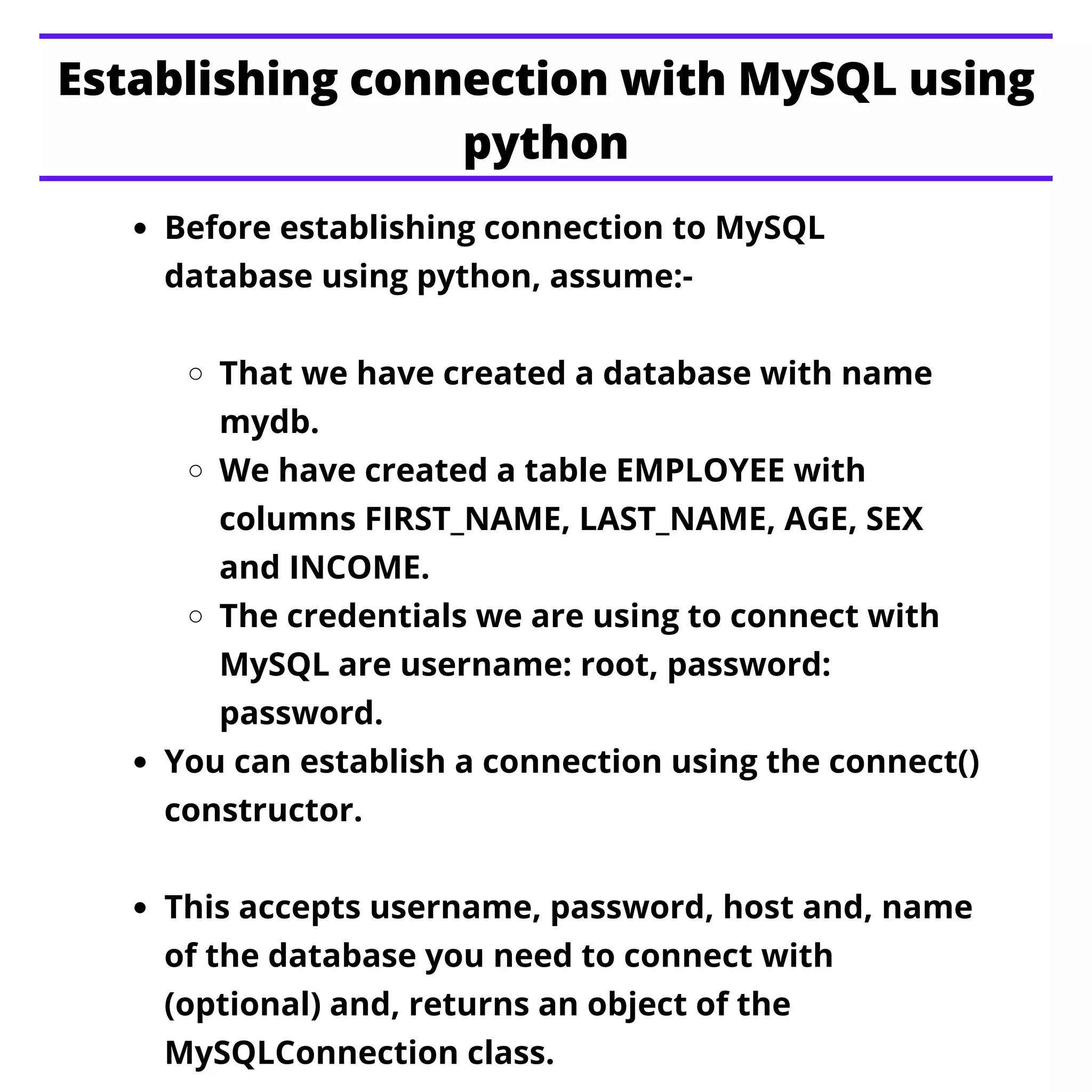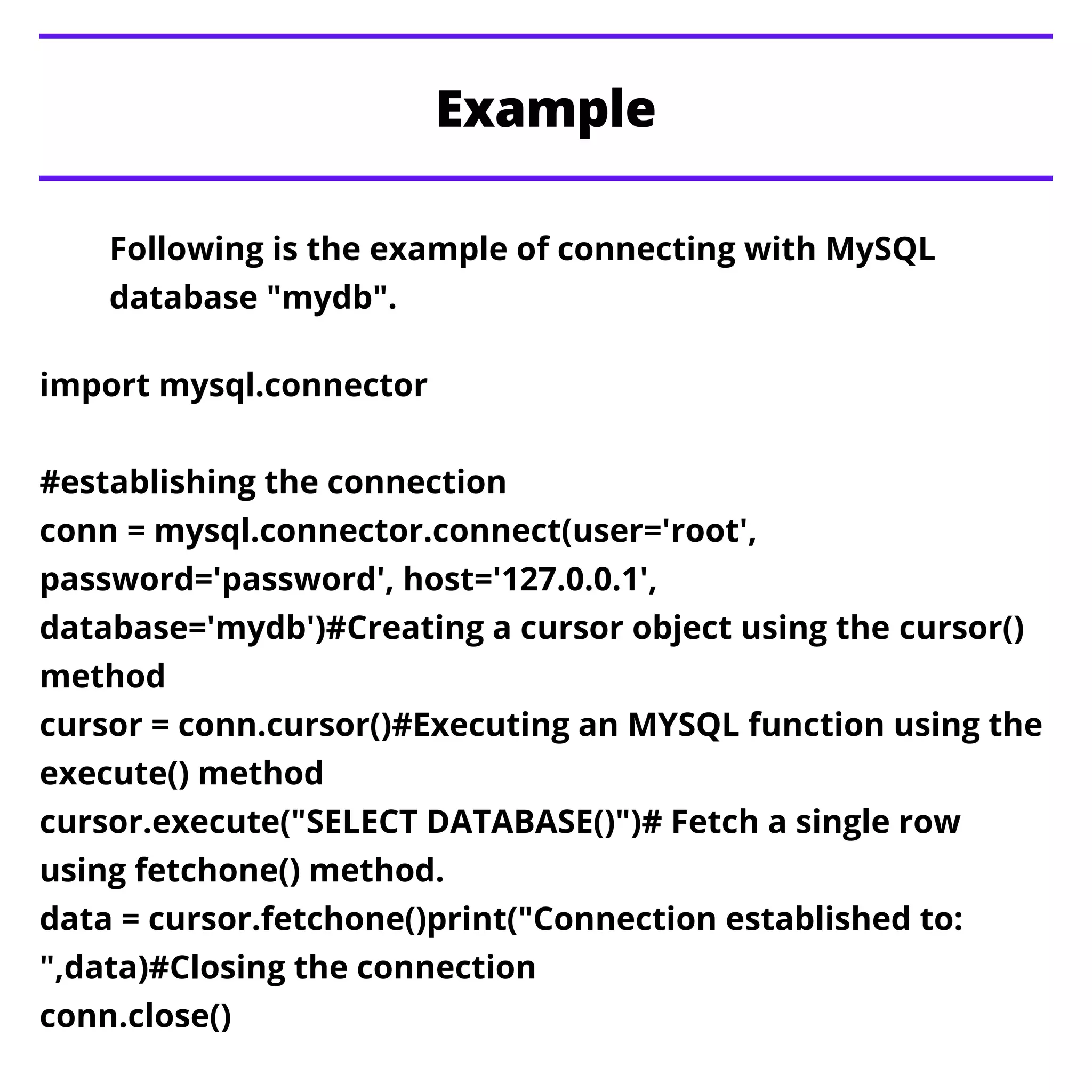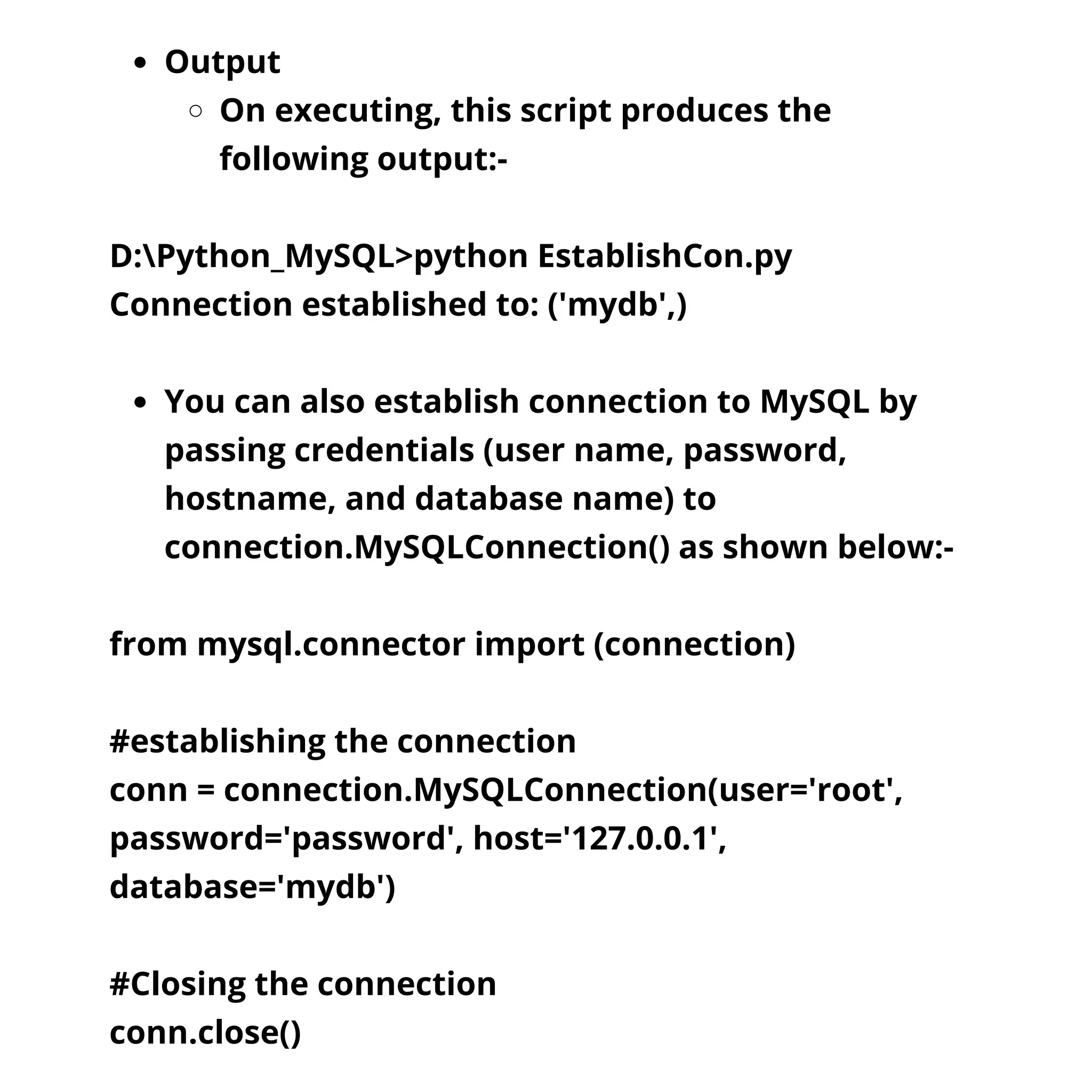The document provides instructions on how to connect to a MySQL database using Python, including the necessary credentials and code snippets. It explains how to establish a connection, create a cursor object, execute a query, and fetch data from the database. Additionally, it hints at future topics related to creating databases, tables, and inserting data in MySQL.

